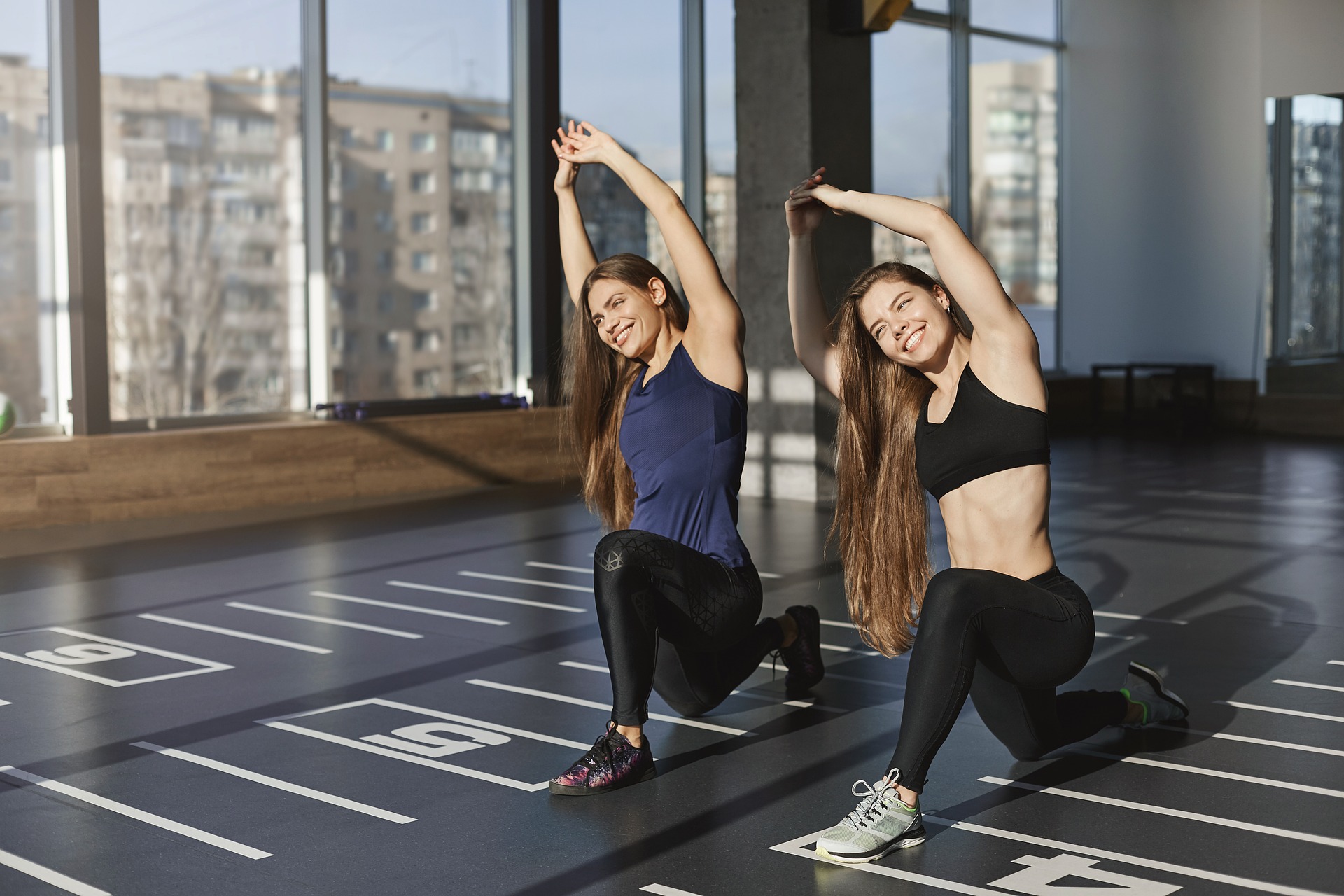
Weighted Vest Training vs. Bodyweight Training: Which Is Better for Real Results?
Key Takeaways
Bodyweight training is foundational: Excellent for beginners, improving core stability, balance, and coordination, and requires no equipment. It’s highly scalable through variations and tempo adjustments.
Weighted vests enhance progressive overload: Ideal for intermediate to advanced individuals who have plateaued with bodyweight exercises, allowing for increased strength, muscle building, and endurance gains.
Both methods are effective and complementary: Neither is inherently “better”; their effectiveness depends on your current fitness level, goals, and specific training needs.
Smart progression is key: Master bodyweight movements first before introducing a weighted vest to avoid injury and maximize results.
Caution is advised: Start light (5-10% of body weight) with a weighted vest, prioritize proper form, and listen to your body to prevent injuries.
You’ve seen the videos. Some athletes crank out pull-ups with a weighted vest strapped on like armor. Others dominate calisthenics routines with nothing but gravity and grit. So… which method wins? Should you stick to your bodyweight or level up with added resistance?
As someone who’s spent a lot of time helping beginners, pros, and everyone in between, I can tell you this: both styles can be incredibly effective—but they serve different purposes. And understanding when and how to use each might be the real secret to better strength, endurance, and overall performance.Let’s break it down.
Why Bodyweight Training Still Dominates the Fitness Scene
Before we throw on extra pounds, let’s give bodyweight training its due.
Bodyweight workouts are accessible, scalable, and surprisingly effective—especially when programmed with intention. From push-ups and planks to single-leg squats and levers, this form of resistance training taps into more than just your muscles. It calls on coordination, balance, and joint control too.
In fact, studies like this one published in the Journal of Human Kinetics found that bodyweight training—especially calisthenics—can match traditional resistance training for improving strength and endurance across multiple fitness levels
Some benefits worth calling out:
No equipment needed: Great for travel, home workouts, or outdoor sessions.
Excellent for core and joint stability: Movements like push-ups, bridges, and hollow holds light up your stabilizers.
Beginner-friendly and endlessly progressive: Think knee push-ups to one-arm push-ups. Progress is baked in.
But here’s the catch…
Eventually, your body adapts. That’s where the weighted vest enters the picture.
Why Weighted Vests Are the Secret Weapon for Breaking Plateaus
Adding a weighted vest is like handing your workout a megaphone. Everything gets louder.
Need more resistance for squats? Add 10-20 lbs. Want your sprints to feel like sled pushes? Vest it up.
What makes weighted vest training unique is how it turns simple bodyweight movements into strength and endurance challenges, without requiring barbells, dumbbells, or gym machines.
Some science-backed perks:
A 2019 study in Biology of Sport found that wearing a weighted vest during sprints improved speed and power output over time
Another study published in Frontiers in Physiology showed improved jump performance and strength when athletes trained with vests at 10-20% of their body weight (source).
Here’s where vests shine:
Progressive overload without needing a gym
Custom resistance for HIIT, calisthenics, running, and CrossFit
Core and postural gains from carrying the extra load, even during walking or static holds
But here’s the golden rule: weight should never compromise form.
A Side-by-Side Look: Bodyweight vs. Weighted Vest Training
Feature | Bodyweight Training | Weighted Vest Training |
Equipment Needed | None | Weighted vest |
Portability | 10/10 | 8/10 (vest needed, but still portable) |
Scalability | High (via form & tempo tweaks) | Very High (via weight adjustment) |
Best For | Beginners, rehab, mobility, skill work | Intermediate/advanced, strength & endurance gains |
Joint Load | Low to moderate | Moderate to high (depends on load used) |
Muscle Building Potential | Moderate (requires advanced movements) | High (especially for legs, back, and core) |
Caloric Burn | Moderate to high (via intensity) | High (adds metabolic demand during movement) |
When to Use Each—And Why the Combo Is Gold
Let’s keep it real—this isn’t an either/or scenario. It’s more like “use the right tool for the right job.”
Here’s how I often break it down with clients:
Use Bodyweight Training When:
You’re just starting out or rehabbing an injury
You’re focusing on mobility, control, or high-rep endurance
You’re training skill-based movements (e.g., handstands, muscle-ups)
Add a Weighted Vest When:
You’ve plateaued in bodyweight reps (e.g., doing 30+ push-ups easily)
You want to build strength or muscle at home
You’re conditioning for military, tactical, or sport-specific goals
A smart progression? Master bodyweight moves first—then use the vest to supercharge them.
So… Which Is Better?
Here’s the thing: Neither is better in a vacuum. But both can be better—for the right person, at the right time.
New to fitness? Start with bodyweight and get strong with the basics.
Hit a wall? Add a vest and reignite your gains.
Want to train anywhere? Both methods travel well.
Training for performance? Combine them.
In fact, some of the most effective workouts I’ve seen blend both seamlessly—think bodyweight circuits with vest intervals, or strength supersets where the vest comes on mid-round.
So don’t choose between them. Use them both like a pro.
TL;DR
Question | Quick Answer |
Is bodyweight training enough? | Yes, especially for beginners and skill-focused work |
Do weighted vests build more strength? | Yes—especially when bodyweight isn’t challenging anymore |
Can I combine both? | Absolutely. It’s a killer combo |
Who should avoid weighted vests? | Total beginners, those with joint issues (consult first) |
Final Thought
For long-term progress, adaptability, and performance, don’t pick sides between bodyweight and weighted vest training—use both synergistically.
Bodyweight training builds your foundation. It establishes core strength, balance, and body control, essential for injury prevention and functional movement. Think of it as the strong base of a building.
Once that foundation is solid, a weighted vest builds the skyscraper. When bodyweight exercises become too easy, adding a vest provides the progressive overload needed to continue building strength, muscle, and endurance. It allows you to keep challenging yourself effectively.
The “view from the top”—your ultimate fitness and performance—is earned pound by pound. It’s the result of combining foundational bodyweight mastery with the incremental challenges of a weighted vest, leading to sustained progress and a truly robust physique.
Doubt-Busters: Clearing Up the Confusion
Is bodyweight training enough for building muscle and strength?
Yes, especially for beginners. Bodyweight training can build significant strength and muscle, particularly when you focus on progressive variations (e.g., knee push-ups to one-arm push-ups) and advanced movements. However, for continuous gains at higher fitness levels, adding external resistance like a weighted vest becomes highly effective.
When should I start using a weighted vest?
You should consider using a weighted vest when you’ve plateaued with your current bodyweight exercises, meaning you can comfortably perform a high number of repetitions (e.g., 30+ push-ups or squats) without feeling challenged. It’s also beneficial if your goal is to build more strength, muscle at home, or train for specific performance goals like military or tactical readiness.
Can I combine bodyweight training and weighted vest training in the same workout or program?
Absolutely! Combining both methods is highly recommended and often leads to the best results. You can use bodyweight exercises for warm-ups, skill work, or high-rep endurance, and then incorporate weighted vest exercises for strength-focused sets, HIIT intervals, or added challenge during runs.
How much weight should I start with in a weighted vest?
It’s crucial to start light to avoid injury and ensure proper form. A good starting point is typically 5-10% of your body weight. Gradually increase the weight as your strength and endurance improve, always prioritizing good technique over heavy loads.
Who should be cautious or avoid using a weighted vest?
Total beginners who haven’t mastered basic bodyweight movements should hold off on using a weighted vest. Individuals with pre-existing joint issues, back problems, or recent injuries should consult a healthcare professional or physical therapist before incorporating weighted vest training to ensure it’s safe for their condition.




casino en ligne
Regards, Very good stuff.
casino en ligne
Really all kinds of amazing advice.
casino en ligne
Whoa quite a lot of wonderful tips.
meilleur casino en ligne
You actually mentioned it fantastically!
casino en ligne
Regards, Quite a lot of tips.
casino en ligne
Great info Thanks.
casino en ligne francais
Truly tons of useful material.
casino en ligne
Tips clearly used..
meilleur casino en ligne
Thanks a lot. Loads of knowledge.
casino en ligne francais
You explained that terrifically.
casino en ligne fiable